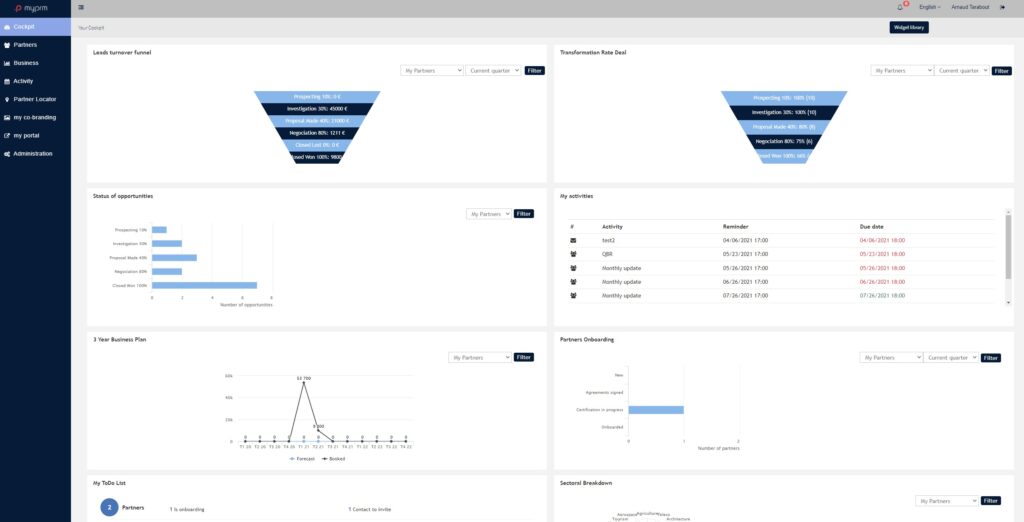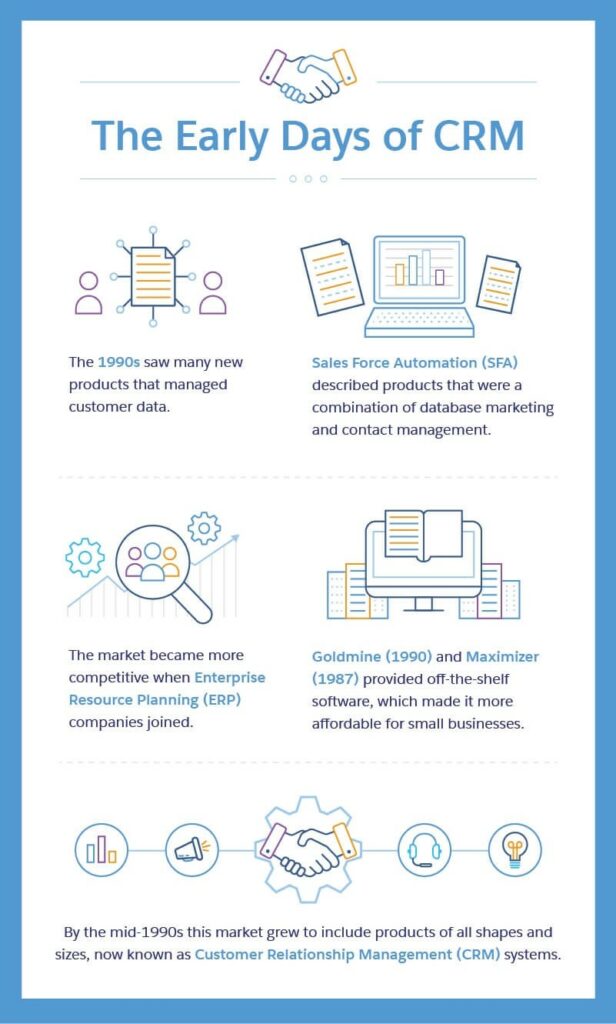
It has become evident that a company’s partners require the same attention as its internal salespeople, that’s why we believe the time has come to supplement CRM with its companion that is dedicated to indirect sales, PRM (Partner Relationship Management).
At a time when CRM has assisted companies to drive direct sales, many are looking for an equivalent to manage their indirect sales. What if the solution is PRM?
The arrival of a new facilitator
Let’s go back a bit to the mid 90s: CRM is booming internationally, particularly in the United States.

At this time, managing indirect sales is still far from being a priority for companies. They collaborate with their partners through manual processes and exchange information in a disconnected way.
PRM softwares begin to emerge, targeting marketing departments primarily. The functionalities of the PRM software were thus oriented towards the marketing departments of partners through the arrival of co-branding and MDF (Marketing Development Funds), and a marketing budget management tool to support partners in their development.
Later on the solutions dedicated to indirect sales started to take shape and became more comprehensive, covering functionalities like sales, finance, marketing and training.
A tool for the brand and its partners
Today, indirect sales has taken a decisive place in the European market as companies need to industrialize their management process. The answer to this need lies in the establishment of a PRM software. The tool is able to simplify the day-to-day management of indirect sales thus maximizing revenue, all while offering a better experience and support to partners and the brand.
PRM tools act as a single point of entry for collaboration between the team in charge of indirect sales and the partners, where everyone can easily find all the necessary information. PRM softwares help throughout the life cycle of the partner, from recruitment to onboarding.
Your brand can attract potential candidates by showing them a public portal where you can present your partner program and its benefits.
As soon as the partnership is in place, the brand can train new partners through its PRM solution. They have two choices: make educational content available to their partners, or organize online training sessions via an e-learning tool. In both cases, the goal is to bring the partners up to speed with the companies’ offerings, so they can be certified and start selling.

The next step is to start cooperating with the partners, creating a sales and marketing plan together in order to launch successful campaigns.
An example of how this played out for Leo and his company
is the Channel Manager in a company that publishes HR software and which recently embarked on an indirect sales strategy. As his indirect business evolved, Leo used different solutions and tools to better manage the sales strategy.
At the very beginning, Leo found himself managing his indirect sales through a CRM tool that included feeds and Excel files for reporting. The CRM allowed him to record the opportunities coming from his partners and the Excel files to exchange data with his partners or with other departments of his company.
The advantage of these two tools were that they were already present in his company and that they required no additional financial costs.
However, while the Excel file offered some flexibility, it quickly became complicated to manage, as it did not allow him to work collaboratively with other teams. Leo also found himself with lost or erroneous data several times as a result of unintentional human errors, not to mention the time it took to export and organise the data.
Since a CRM tool is above all, a tool dedicated to direct sales, Leo needed different functionalities in terms of data or even reports, which systematically entailed a significant cost for a result that still would not have been the one he expected or needed.
Including indirect partners on the website
In addition to managing the indirect sales of his business, Leo had also established a certain proximity with the marketing department in order to create a new page for partners on the brand’s website.
The main purpose of this page was to attract potential new partners by highlighting the company’s partner program. For Leo, it was also the ability to continue to attract new partners on a regular basis.
While this page was meant to support Leo in his work, he had no autonomy over the creation of the page and constantly had to be in contact with the marketing department for any modifications that he wanted to make. This could take several days or several weeks depending on the priorities of the marketing department.
The establishment of effective partner portals
As soon as PRM (Partner Relationship Management) software began to succeed, Leo was able to equip himself with a PRM tool, allowing him to set up partner portals on his own.
The first public portal looked like the page was created by the web development team on the website. However this time, Leo could create it independently and modify it any time he wished so. He also had control over the application process, which he could manage more easily, directly in his PRM, without polluting his mailbox.
The private portal was used by partners to manage the partnership more easily. Thanks to this tool, partners could manage their lead and deal declarations autonomously and find all the information concerning their relationship with the brand, always up to date!
The evolution of indirect sales
Leo also chose a PRM tool for its ability to adapt to his needs. Now, his PRM tool has its own platform on which he can fully manage his indirect sales. Of course, it is interconnected with his CRM tool for more efficiency!
Leo’s PRM software also allows him to have a real-time view of the performance of his partners thanks to the dashboard which also allows him to make reports to his superiors.
Leo has better knowledge of his partners thanks to a complete partner file on which he finds all the information he needs, but also their common business and marketing plan. Not to mention that Leo also receives real time notifications through the tool to be informed about what is happening in his business.
Finally, Leo can also enrich his partner offerings by providing them with an e-learning tool as well as marketing modules. E-learning allows partners to be autonomous in the management of their online training. Marketing tools such as co-branding (offers partners the possibility of personalizing a document with their own branding) or the MDF (Marketing Development Funds which allows the brand to co-finance the marketing activities of its partners) allow partners to grow and generate more income.
PRM is on the way to becoming the essential tool for indirect sales. If you are in need of having a partner relationship management tool that can handle all your partner activities, contact us.


